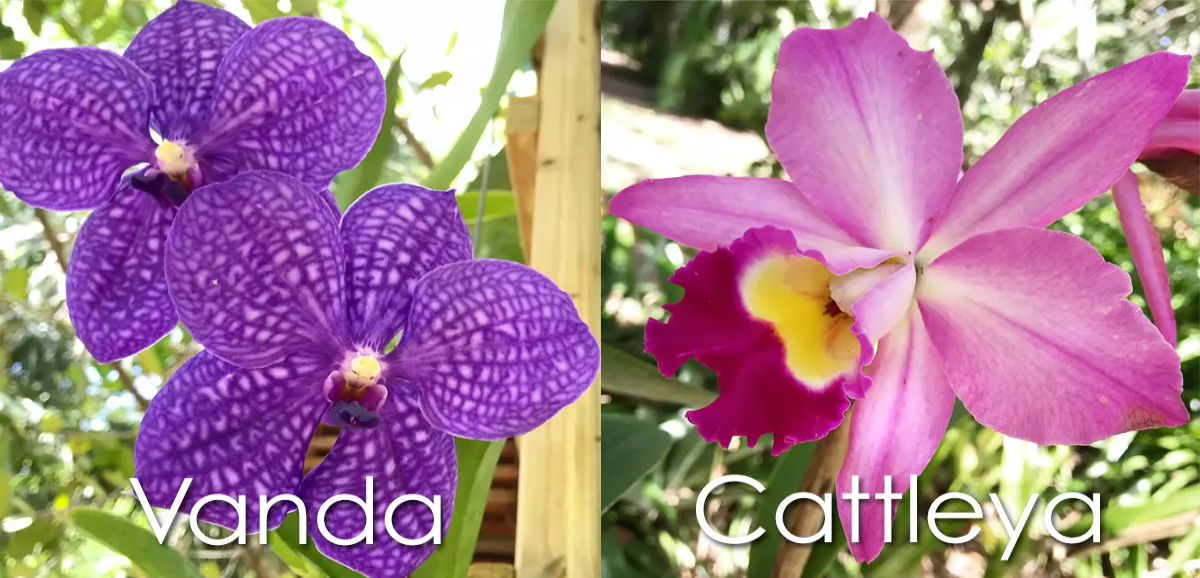Like any other plant, orchids require light, correct temperature ranges, humidity, water and feeding. Orchids are variable in their light requirements depending on genera and variety.
The Vanda was first discovered in 1613 by Alvin Semedo and the name Vanda comes from the Sanskrit word for orchid. Vandas do not need soil to grow, in fact, potting them in soil would cause their roots to rot. The Vanda orchid’s natural habitat is tropical. They require a very high level of humidity and light shade is needed. You will be able to determine just how much light your Vanda orchid requires by identifying the type of leaves your orchid has.
There are 3 types of Vanda orchids, each with a different type of leaf. The first type is the strap-leaf (broad, flat leaves), the second type is terete (round, pencil-like leaves), and the third is semi-terete (hybrid of strap-leaf & terete leaf). Terete leaf Vandas need full sun, semi-terete leaf Vandas need a bit less sun, and strap-leaf Vandas need even a little less light.
Cattleya orchids originate from Central and South America and were named for the English orchid collector William Cattleya. They have been widely hybridized, resulting in a large variety of colors and forms. Cattleyas thrive with humid conditions and in medium light. In hot weather, keep them shaded sufficiently ensuring the leaves are cool to the touch. If a Cattleya orchid is kept in excessively moist conditions, disease and rot can set in which will cause damage to the plant.
There are a number of orchids blooming in our rainforest right now, stop in and check them out.






